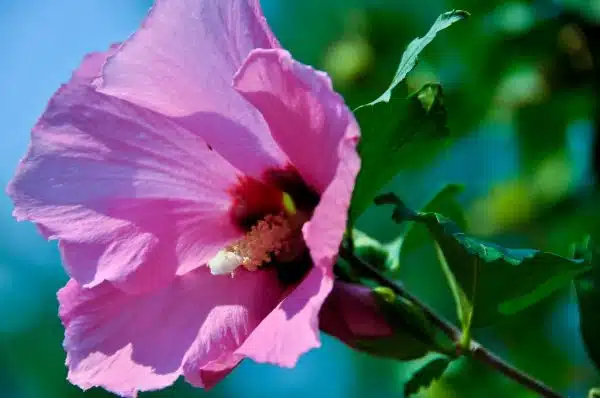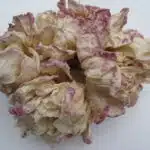As an expert in rose gardening, I am often asked about the best types of rose bushes to grow for beginners. While many varieties of roses require specific care and attention, there are several easy-to-grow options that can thrive with minimal effort. In this article, I will introduce seven of my favorite rose bushes that are perfect for those looking to add a touch of beauty and elegance to their garden.
First on the list is the Knock Out Rose, which has become increasingly popular in recent years due to its hardiness and disease resistance. This hybrid rose bush produces clusters of bright red or pink blooms throughout the growing season and requires little pruning or maintenance. Another great option for beginners is the Floribunda Rose, which produces large clusters of colorful blooms on sturdy stems. These roses come in a variety of colors, including yellow, pink, orange, and red, making them a versatile addition to any garden. Stay tuned as we explore these easy-to-grow rose bushes in more detail and discover how you can add them to your own garden with ease.
Knock Out Rose: A Hardy And Disease-Resistant Option
When it comes to easy-to-grow rose bushes, the Knock Out rose is a great option. This variety of roses is known for its hardiness and disease resistance, making it a popular choice among gardeners. If you’re looking for a low-maintenance rose bush that requires minimal care but still provides plenty of benefits, then the Knock Out rose might be just what you need.
One of the benefits of growing a Knock Out rose bush is that it requires very little maintenance. Unlike other types of roses that require frequent pruning and fertilization, the Knock Out rose can thrive with minimal care. To keep your Knock Out rose healthy, you’ll want to water it regularly and make sure it gets plenty of sunlight. You may also want to add a layer of mulch around the base of the plant to help retain moisture in the soil.
If you’re looking for companion plants to grow alongside your Knock Out rose bush, there are several options to choose from. Some good choices include lavender, salvia, and catmint. These plants not only look great alongside roses but also attract beneficial insects like bees and butterflies. When it comes to pruning your Knock Out rose bush, there are a few techniques you’ll want to keep in mind. One important tip is to prune your roses in late winter or early spring before new growth begins.
Floribunda Rose: Large Clusters Of Colorful Blooms
The Knock Out Rose is a symbol of hardiness and resilience in the world of rose gardening. Its disease-resistant qualities make it an easy-to-grow option for novice gardeners or seasoned experts alike. It requires minimal maintenance, making it a popular choice for those with busy schedules or limited experience.
Moving on to the Floribunda Rose, this variety offers large clusters of colorful blooms that are perfect for adding a pop of color to any garden space. When planting this type of rose bush, it is important to choose a location that receives ample sunlight and has well-draining soil. Pruning techniques will vary depending on the specific cultivar, but generally involve removing dead or damaged branches and shaping the bush to promote healthy growth.
To ensure your Floribunda Rose reaches its full potential, keep in mind these planting tips and pruning techniques. With proper care, you can enjoy an abundance of vibrant blooms throughout the growing season. In the next section, we’ll explore another variety of rose bush: the drift rose. This low maintenance and versatile option is perfect for those looking to add beauty to their garden without a lot of effort.
Drift Rose: Low Maintenance And Versatile
Drift Roses are a hybrid variety of rose bush that has been bred to grow in a spreading, mat-like form. They are renowned for their low maintenance requirements and adaptability to different climates and soils. Drift Roses bloom in a wide range of colors, including shades of pink, yellow, and white, and can be used in a variety of garden settings. They are an excellent choice for those that are seeking a low maintenance and versatile plant. Additionally, they are hardy, disease-resistant, and require minimal pruning. Drift Roses are an ideal choice for those looking to add a beautiful and effortless addition to their garden.
Drift Roses
Drift Roses are a popular choice for gardeners who want an easy-to-grow rose bush. They are low maintenance and versatile, making them a great option for those who want to add color and beauty to their outdoor space without spending too much time caring for their plants. Drift Roses come in a variety of colors, including pink, red, coral, and white.
One of the benefits of Drift Roses is that they require very little maintenance. They are resistant to disease and pests, which means that they don’t require regular spraying or pruning. They are also drought tolerant, so they can survive in areas with minimal rainfall. Unlike other ground cover options such as ivy or juniper, Drift Roses provide a burst of color when they bloom.
Drift Roses are an excellent alternative to other ground cover options because they require less work and provide more beauty. Other ground covers can be invasive or require constant pruning to keep them in check. Drift Roses are self-cleaning, which means that spent blooms fall off on their own instead of needing to be removed manually. Overall, Drift Roses are an excellent choice for anyone looking for a low-maintenance rose bush that will add beauty and color to their outdoor space without requiring too much effort.
Low Maintenance
Drift Roses are known for their low maintenance and versatility, making them a popular choice for gardeners who want to add color and beauty to their outdoor space without much effort. One of the benefits of low maintenance rose bushes is that they require less time and resources to care for, making them an ideal choice for those with busy schedules or limited gardening experience.
To care for low maintenance roses like Drift Roses, it’s important to provide them with well-draining soil and regular watering. Fertilizing once a year in early spring can also help promote healthy growth and blooming. Another tip is to avoid over-pruning or deadheading, as this can actually reduce the number of blooms produced by the plant.
Overall, choosing a low maintenance rose bush like Drift Roses can provide many benefits for gardeners looking to add beauty and color to their outdoor space without requiring too much effort. By following a few simple tips for caring for these plants, anyone can enjoy the beauty of these versatile and easy-to-grow roses.
Versatility
Drift Roses are highly versatile rose bushes that can be used in a variety of ways to enhance the beauty of any outdoor space. These low maintenance roses come in a range of colors, including pink, red, white, and yellow, making them an excellent choice for gardeners who want to add vibrant hues to their landscape. Additionally, these roses can be grown as groundcover or in containers, making them ideal for those with limited space.
One of the benefits of the versatility of Drift Roses is that they can be used in a range of landscape designs. They make excellent borders and edging plants and can also be grown as low hedges or mass plantings. Furthermore, these roses look great when planted alongside other low maintenance perennials like lavender and salvia. Whether you’re looking to create a formal garden or a more relaxed cottage-style landscape, Drift Roses are sure to add beauty and color.
Growing Drift Roses is relatively easy due to their low maintenance requirements. These roses prefer well-draining soil and regular watering but are generally drought-tolerant once established. They also require little pruning beyond removing dead or damaged wood, which makes them an ideal choice for those who don’t have much time for gardening tasks. Overall, the versatility of Drift Roses combined with their easy care requirements makes them an excellent choice for anyone looking to add beauty and color to their outdoor space without too much effort.
Carpet Rose: Perfect For Ground Cover
Carpet roses are a type of ground cover rose that grow low and spread wide. They are the perfect solution for those wanting to add beauty to their garden while also covering up uneven or unsightly areas. Not only do they add color and texture, but they also offer several benefits as a ground cover.
One of the biggest benefits of ground cover is its ability to prevent soil erosion. Carpet roses have deep roots that hold onto soil, making them an excellent choice for sloped areas or places prone to heavy rainfall. Additionally, they help suppress weed growth, reducing the need for herbicides and manual weeding.
To ensure your carpet roses thrive, it is important to plant them in the right soil. The best soil for carpet roses is well-draining with a pH level between 6.0-6.5. If your soil is too alkaline, you can amend it by adding sulfur or aluminum sulfate. It is also recommended to add compost or other organic matter to improve soil structure and fertility.
Table:
| Benefits of Ground Cover | Best Soil for Carpet Roses |
|---|---|
| Prevents Soil Erosion | Well-draining |
| Suppresses Weed Growth | pH level 6-6.5 |
| Adds Color and Texture | Amended with Sulfur/Aluminum Sulfate |
| Added Organic Matter |
Carpet roses are not only beautiful but also practical as a ground cover option in your garden. With their ability to prevent soil erosion and suppress weed growth, they provide many benefits while requiring minimal maintenance once established. To ensure optimal growth, be sure to plant them in well-draining soil with a pH level between 6-6.5 amended with sulfur or aluminum sulfate if needed and enriched with organic matter.
As we move on from discussing the benefits of carpet roses as a ground cover, the next section will focus on shrub roses. These bushy and easy-to-care-for roses are perfect for those looking to add a pop of color to their yard without much hassle.
Shrub Rose: Bushy And Easy To Care For
A shrub rose is like a sprawling bush that adds a touch of elegance to your garden. It is easy to grow and care for, making it an ideal choice for novice gardeners or those with limited time for maintenance. These roses come in a variety of colors and sizes, ranging from compact to tall.
One of the keys to maintaining healthy and beautiful shrub roses is proper pruning techniques. Pruning should be done during the dormant season, usually in late winter or early spring. This will encourage new growth and prevent diseases from spreading. When pruning, remove any dead or diseased branches, as well as any crossed branches that may rub against each other. This will promote good air circulation and help prevent pest infestations.
In addition to pruning techniques, soil requirements are also important when growing shrub roses. They prefer well-drained soil that is rich in organic matter. If your soil is heavy or clay-like, consider amending it with compost or other organic materials before planting your roses. Proper watering and fertilization are also key factors in keeping your shrub roses healthy and thriving. With the right care and attention, you can enjoy the beauty of these easy-to-grow rose bushes year after year.
As you explore different types of roses for your garden, consider adding climbing rose: adds height and drama to create a stunning visual display. Climbing roses can be trained to grow up trellises or walls, adding vertical interest to your landscape design. Like other types of roses, they also require proper pruning techniques and soil requirements to thrive. In the next section, we will delve deeper into the world of climbing roses and how you can incorporate them into your garden design scheme.
Climbing Rose: Adds Height And Drama
Shrub roses are an excellent choice for gardeners who want easy-to-grow rose bushes. They are bushy and require minimal care, making them perfect for those who don’t have much time to devote to gardening. Shrub roses come in a variety of colors and sizes, so they can be used in many different landscaping ideas.
When it comes to caring for shrub roses, there are a few things you need to keep in mind. First, make sure they get plenty of sunlight. Most shrub roses need at least six hours of direct sunlight per day. Second, water them regularly but don’t overwater them. Too much water can lead to root rot, which can kill the plant. Finally, prune your shrub roses in the early spring before new growth begins.
If you’re looking for an easy-to-grow rose that adds height and drama to your garden, consider a climbing rose. Climbing roses are perfect for training up trellises, fences, or walls. They come in a variety of colors and fragrances and can add a romantic touch to any garden.
Table:
| Type of Rose | Height | Fragrance |
|---|---|---|
| Shrub Rose | 3-6 feet | Mild |
| Climbing Rose | Up to 20 feet | Strong |
When it comes to landscaping ideas with climbing roses, think about using them as a focal point or accent piece in your garden. Plant them near a seating area or along a pathway to create an inviting atmosphere. Care tips for climbing roses include pruning in late winter or early spring and training the stems onto their support structure.
Transition: Now that we’ve covered shrub and climbing roses, let’s move on to another popular type of rose: the hybrid tea rose. These classic and fragrant roses are perfect for adding elegance and beauty to any garden space.
Hybrid Tea Rose: Classic And Fragrant
Hybrid Tea Roses, first developed in 1867, are a classic garden favorite and a popular choice for gardeners of all levels of experience. These easy-to-grow roses are known for their classic shape and fragrant blooms, and come in a variety of colors and fragrances. To ensure optimal growing conditions, Hybrid Tea Roses should be planted in well-drained soil in locations that receive at least six hours of sunlight per day. Pruning should be done in the late winter or early spring, with dead blooms removed as the season progresses. Hybrid Tea Roses come in a variety of fragrant varieties, from the classic rose scent to fruity and citrusy aromas. With proper care and attention, Hybrid Tea Roses can provide years of beauty and fragrance to any garden.
Hybrid Tea Rose History
Hybrid Tea Rose History is an interesting and important aspect of rose gardening. Hybrid tea roses are a result of breeding techniques that began in the late 1800s, as gardeners sought to create a rose variety that was both fragrant and had a long bloom period. The first hybrid tea roses were introduced in the early 1900s, and since then they have become one of the most popular types of rose bushes.
One of the defining characteristics of hybrid tea roses is their color variations. These include shades of red, pink, yellow, orange, and white. Hybrid tea roses also have high-centered buds that open into large flowers with many petals, making them ideal for creating stunning floral arrangements. Overall, hybrid tea roses are known for their classic elegance and beauty.
Today, hybrid tea rose breeding techniques continue to evolve, allowing gardeners to enjoy even more color variations and unique hybrids. With their easy-to-grow nature and delightful fragrance, these rose bushes are perfect for anyone looking to add some classic charm to their garden or home. Whether you’re an experienced gardener or just starting out on your gardening journey, there’s no doubt that hybrid tea roses will make a wonderful addition to your collection of plants.
Growing Tips
When it comes to growing hybrid tea roses, there are a few tips that any rose gardening enthusiast should keep in mind. First and foremost, proper soil preparation is essential for optimal growth. Hybrid tea roses prefer well-drained soil that is rich in organic matter. Before planting, it’s a good idea to amend the soil with compost or other organic materials to ensure that the roses have access to the nutrients they need.
In addition to soil preparation, pruning is also an important aspect of growing healthy hybrid tea roses. Regular pruning helps promote new growth and encourages the production of larger flowers. It’s recommended that gardeners prune their hybrid tea roses in early spring, just before new growth begins. This will help ensure that the roses have plenty of time to develop strong, healthy stems and foliage before flowering season.
Finally, it’s worth noting that while hybrid tea roses are generally easy-to-grow plants, they do require some care and attention to thrive. Regular watering, fertilization, and pest control are all important components of successful rose gardening. With these tips in mind, however, anyone can cultivate beautiful and fragrant hybrid tea roses in their own garden or home!
Fragrance Varieties
When it comes to roses, their beauty and fragrance are what make them so beloved by gardeners around the world. Hybrid tea roses, in particular, are prized for their classic elegance and delightful scents. Each variety of hybrid tea rose has its own unique aroma, ranging from sweet and fruity to spicy and musky. Understanding the different fragrance varieties is key to choosing the right roses for your garden or home.
Rose fragrance benefits go beyond just smelling pleasant; it can also have a positive impact on our health and wellbeing. Studies have shown that the scent of roses can help reduce stress and anxiety levels, promote relaxation, and even improve mood. With these benefits in mind, it’s no wonder that rose gardening has become such a popular hobby among people looking to improve their mental and emotional wellbeing.
If you’re looking to enhance the scent of your hybrid tea roses, there are a few best ways to do so. First and foremost, make sure you choose varieties known for their strong fragrances. Additionally, planting your roses in a sunny location with good air circulation will help maximize their scent production. Finally, consider using organic fertilizers and avoiding chemical pesticides as these can negatively impact both the fragrance and overall health of your roses. By following these tips, you can enjoy the full beauty and aromatherapy benefits of your hybrid tea roses for years to come!
Grandiflora Rose: A Combination Of Hybrid Tea And Floribunda
Imagine a rose bush that combines the best features of both Hybrid Tea and Floribunda roses. A plant with long stems, high-centred blooms, and the ability to produce clusters of flowers throughout the growing season. This is what we call a Grandiflora rose.
Pruning is essential for keeping your Grandiflora rose healthy and blooming. It’s important to prune in early spring before new growth appears. Cut back any dead or diseased wood, along with any crossing branches or stems that are growing inward toward the center of the plant. Your goal should be to open up the plant, allowing air and light to circulate freely throughout.
When it comes to companion planting for Grandiflora roses, consider adding lavender or catmint for their fragrance and ability to attract pollinators. You can also try planting them alongside perennials like salvia or echinacea for added color and texture. Just be sure to give your roses enough space so they don’t have to compete with other plants for nutrients and water. With proper care and attention, your Grandiflora rose will reward you with stunning blooms year after year.
As you tend to your garden with care, there’s nothing quite like the romantic charm of an English Rose. These old-fashioned beauties are known for their full, fragrant blooms in shades ranging from soft pastels to rich pinks and reds. But don’t let their delicate appearance fool you – English Roses are hardy plants that can thrive in a variety of conditions.
English Rose: Romantic And Old-Fashioned
The grandiflora rose, a combination of the hybrid tea and floribunda, is a popular choice among gardeners. However, if you are looking for a more romantic and old-fashioned feel for your garden, consider planting English roses. With their rich history and symbolism, these roses have been cherished for centuries.
English roses were first introduced in the 1960s by David Austin, an English rose breeder who combined the best qualities of old-fashioned roses with modern hybrid teas. These roses are known for their fullness, fragrance, and beautiful colors. They come in a wide range of shades from soft pink to deep red and can be grown as shrubs or climbers.
To grow English roses successfully, it is important to provide them with the best growing conditions. These roses prefer rich soil that is well-draining and slightly acidic. They also need plenty of sunlight but can tolerate some shade. Regular pruning is necessary to promote growth and prevent disease. With proper care, English roses can thrive in your garden for years to come.
Transition: If you are looking for something smaller in size but still packs a punch in beauty, consider planting miniature roses. These delicate blooms are perfect for containers and small spaces.
Miniature Rose: Perfect For Containers And Small Spaces
Imagine walking into your small apartment or bustling city garden, seeing the vibrant hues of miniature roses blooming in beautiful containers. Container gardening is a fantastic way to bring the beauty of roses into small spaces and indoor environments. Miniature roses are perfect for this purpose, as they come in various colors and require minimal care.
When planting miniature roses, it’s essential to choose a container that’s at least 12 inches wide and deep enough to accommodate root growth. The soil should be high-quality potting mix with good drainage to prevent waterlogging. Once planted, place the container in an area that receives at least six hours of sunlight per day.
Indoor rose care requires attention to detail, especially when it comes to watering and fertilizing. Water your miniature rose deeply once a week and feed with a balanced fertilizer every four weeks during the growing season. Regular pruning is also necessary to maintain its shape and ensure abundant blooms throughout the year.
If you’re looking for a stunning addition to your small space or indoor garden, look no further than miniature roses in containers. With proper care, these easy-to-grow rose bushes will provide endless beauty and joy all year round.
Transitioning into our next topic about polyantha roses: if you’re looking for a rose variety that offers abundant blooms and disease resistance, polyantha roses might be the perfect choice for you.
Polyantha Rose: Abundant Blooms And Disease Resistance
Miniature roses are perfect for those who have limited space or want to grow roses in containers. However, if you have a larger area and want a rose bush that is easy to grow and maintain, then the Polyantha rose is an excellent choice. These roses are known for their abundant blooms and disease resistance, making them ideal for novice gardeners.
Growing tips for Polyantha roses include planting them in well-draining soil with plenty of organic matter. They prefer full sun exposure but can tolerate partial shade. Watering should be done regularly, especially during dry periods, but overwatering should be avoided as it can cause root rot. Fertilization should also be done regularly during the growing season to promote healthy growth.
Pruning techniques for Polyantha roses involve removing any dead or diseased wood in late winter or early spring before new growth begins. The goal is to shape the plant into a tidy mound by cutting back one-third of its total height each year. This will encourage new growth and promote more blooms throughout the season.
The Rugosa rose is another type of rose that is worth considering if you live in an area with harsh weather conditions. These roses are incredibly hardy and can tolerate extreme cold, wind, and salt spray from the ocean. Growing tips for Rugosa roses include planting them in well-drained soil with full sun exposure. Pruning should be done after flowering has finished, removing any dead or diseased wood while shaping the plant to your desired size and shape.
Transition: Now that we’ve covered easy-to-grow miniature roses, abundant blooming polyanthas, and hardy rugosas that can withstand harsh weather conditions let’s turn our attention to another variety- The Hybrid Tea Rose- one of the most popular types of roses grown today!
Rugosa Rose: Tolerant Of Harsh Weather Conditions
As a rose gardening expert, I highly recommend the rugosa rose for its tolerance of harsh weather conditions. This hardy shrub is perfect for those who want an easy-to-grow rose bush that can withstand hot summers and cold winters. With its thick, leathery leaves and sturdy stems, the rugosa rose is capable of surviving in a variety of environments.
One of the benefits of growing rugosa rose is that it produces beautiful blooms in shades of pink, white, and red. These fragrant flowers are not only visually appealing but also attract pollinators such as bees and butterflies to your garden. Additionally, rugosa rose hips can be harvested and used to make tea or jelly, adding another layer of usefulness to this versatile plant.
To care for your rugosa rose, it’s important to provide it with well-draining soil and full sun exposure. Water deeply but infrequently to encourage deep root growth and fertilize once a year with a balanced fertilizer. Prune in the late winter or early spring before new growth appears to remove any dead or diseased wood and shape the plant as desired.
Growing rugosa roses is a rewarding experience that will provide you with beautiful blooms and functional hips while requiring minimal maintenance. In the subsequent section, we’ll explore another type of rose that offers rich colors and fragrance: bourbon roses.
Bourbon Rose: Rich Colors And Fragrance
Bourbon roses are a popular choice for those who want to add a touch of elegance to their garden. These roses are known for their rich colors and fragrances, making them a perfect addition to any garden. One of the best things about bourbon roses is that they are easy-to-grow rose bushes, which makes them an ideal choice for beginners.
If you’re planning on growing bourbon roses in your garden, there are a few tips that you should keep in mind. First, make sure that you plant them in an area that receives plenty of sunlight. Bourbon roses need at least six hours of direct sunlight each day to thrive. Additionally, these roses prefer well-drained soil, so make sure that the soil in your garden is loose and airy.
When it comes to companion plants for bourbon roses, there are several options available. Some good choices include lavender, catmint, and salvia. These plants not only look beautiful when planted alongside bourbon roses but also help to repel pests and attract beneficial insects to your garden. By choosing the right companion plants, you can create a beautiful and healthy environment for your bourbon roses to grow in.
As you can see, growing beautiful bourbon roses is an easy task if you follow these simple tips. With their rich colors and fragrances, these roses will add a touch of elegance and beauty to any garden. In the next section, we’ll take a closer look at china rose: delicate and elegant – another great option for those looking to add some sophistication to their outdoor space.
China Rose: Delicate And Elegant
Bourbon roses are a great choice for gardeners who crave beautiful colors and a pleasing fragrance. These roses are easy to care for and can thrive in various growing conditions. Care tips for these roses include planting them in fertile, well-drained soil, watering them regularly, and pruning them back in the fall.
When it comes to companion plants for Bourbon roses, there are many options to choose from. Some of the best companions include lavender, catmint, and Russian sage. These plants not only provide a beautiful contrast to the rich colors of Bourbon roses but also attract beneficial insects to your garden.
Moving on to the China rose, this variety is known for its delicate and elegant appearance. With its soft petals and sweet fragrance, it’s no wonder why China roses have been popular since ancient times. To care for these roses, make sure they receive plenty of sunlight and water regularly. Additionally, pruning is important to promote healthy growth and abundant blooming. As far as companions go, consider pairing China roses with peonies or clematis for a stunning display of color and texture.
Transitioning into our next section about moss rose: unique and textured blooms. Moss roses are an excellent choice for gardeners who want something out of the ordinary in terms of texture and appearance. These compact plants produce small flowers with a unique fuzzy texture that adds interest to any landscape design. Care tips include planting them in full sun with well-draining soil and avoiding overwatering. When it comes to companions, moss roses pair well with succulents or other low-growing annuals like marigolds or petunias for a colorful carpet-like effect in your garden bed.
Moss Rose: Unique And Textured Blooms
Moss rose is a unique garden design that can add a touch of elegance to any landscape. This plant is quite popular among gardeners due to its ability to grow in adverse conditions, making it an ideal choice for beginners. According to recent surveys, moss roses have become increasingly popular over the past decade due to their stunning blooms and easy-to-grow nature.
One of the most noticeable features of moss roses is their textured blooms. These flowers come in a wide range of colors, including red, pink, orange, yellow, and white. The petals are densely packed together, giving the flower a full and lush appearance. Moss roses also have small green buds that give the plant a unique texture that adds interest to floral arrangements.
Moss roses make an excellent addition to any garden or landscape design. They are easy to maintain and can be grown in various soil types with minimal care. Moreover, they are resistant to pests and diseases, making them an ideal choice for those who want a low-maintenance plant. Planting moss roses in your garden can help you create beautiful floral arrangements without having to worry about high maintenance costs or complicated care routines.
Frequently Asked Questions
What Is The Best Time Of Year To Plant These Rose Bushes?
To achieve the best results when planting rose bushes, it is important to consider both the timing and location of the planting. The ideal time for planting rose bushes is during the dormant season, which typically occurs in late winter or early spring. This allows for the roots to establish themselves before the warmer weather arrives. Additionally, selecting an appropriate planting location is crucial. Rose bushes require at least six hours of direct sunlight per day and well-draining soil with a pH between 6.0 and 6.5. It is also important to avoid areas with strong winds and excessive shade. By carefully choosing the right time and location for planting, gardeners can ensure that their rose bushes thrive and produce beautiful blooms for years to come.
Do These Rose Bushes Have Any Specific Soil Or Sunlight Requirements?
When it comes to maintaining rose bushes, it is essential to pay close attention to the type of soil and sunlight requirements. To ensure optimal growth, rose bushes require well-draining soil with adequate levels of nutrients and a minimum of six hours of direct sunlight each day. It is critical to avoid overwatering or underwatering the plant as this can lead to root rot or dehydration. Pruning techniques also play a crucial role in promoting healthy growth, and it is recommended to prune rose bushes during the dormant season. By following these maintenance tips, your rose bushes will thrive and produce beautiful blooms year after year.
How Often Should These Rose Bushes Be Watered?
Watering frequency is a critical aspect of rose bush cultivation, and it varies depending on the soil type, temperature, humidity, and rainfall. Generally, rose bushes require at least one inch of water per week during the growing season. However, this may vary depending on their drought tolerance level. If your roses have higher drought tolerance levels or are established plants, they may only need watering once every two weeks. It’s essential to keep an eye on the leaves to determine if they are wilting or drooping because this could be a sign that they need more water. Additionally, it’s best to water your roses early in the morning or late in the evening when temperatures are cooler and evaporation rates are lower.
Are There Any Common Pests Or Diseases That These Rose Bushes Are Susceptible To?
Common rose pests include aphids, spider mites, and thrips. These pests feed on the leaves and stems of the rose bush, leading to stunted growth and damaged flowers. To prevent these pests from infesting your rose bushes, it’s important to keep them healthy by providing adequate water and fertilizer. Additionally, regularly inspecting your roses for signs of infestation can help catch any problems early on before they become serious. As for preventing diseases in roses, it is essential to maintain good hygiene practices such as removing dead or infected foliage from the plant and pruning away affected areas. Fungal diseases such as black spot and powdery mildew can also be prevented by ensuring proper air circulation around the plant. A hypothetical example of the importance of pest prevention could be a gardener noticing an aphid infestation too late resulting in irreversible damage to their beloved rose bush. Thus, regular inspections will save you time and effort in the long run while keeping your roses looking their best all season long.
Can These Rose Bushes Be Propagated Through Cuttings Or Division?
Propagation methods are an essential aspect of rose gardening. The two common propagation methods for rose bushes are cuttings and division. Cuttings involve taking a stem from the mother plant and growing it into a new plant. This method is advantageous as it allows gardeners to create an exact replica of the mother plant, ensuring that they get the desired traits such as color, fragrance, or disease resistance. Division involves separating a mature plant into smaller pieces, each with its roots, leaves, and stems. This method is useful when a gardener wants to rejuvenate an old plant or multiply their collection by creating several new plants from one. Benefits of propagation include preserving rare species, maintaining genetic diversity, and saving money on purchasing new plants. As an expert in rose gardening, I encourage gardeners to explore different propagation techniques to expand their collection and share their love for roses with others who have a subconscious desire for serving the community through horticulture.
Conclusion
Planting and growing roses can seem overwhelming, but it doesn’t have to be. With the right knowledge and care, anyone can cultivate a beautiful rose garden. These 7 easy-to-grow rose bushes are perfect for beginners or those looking for low-maintenance options.
When planting these rose bushes, it’s best to do so in the early spring when the soil is warm and workable. They require well-draining soil and full sun exposure for optimal growth. Watering should be done deeply once a week, but be careful not to overwater as this can lead to root rot.
While roses are susceptible to pests and diseases such as aphids and black spot, these particular varieties are relatively resistant. Propagation through cuttings or division is also possible with some of these species.
In conclusion, growing roses doesn’t have to be a daunting task. These 7 easy-to-grow rose bushes provide stunning blooms with minimal effort required. By following proper planting techniques and providing adequate care, anyone can enjoy a flourishing rose garden that will bring joy for years to come. Don’t let fear hold you back from experiencing the beauty of these magnificent flowers – give them a try today!
Image Credits
- “Rose of Sharon Bush” by likeaduck (featured)





























